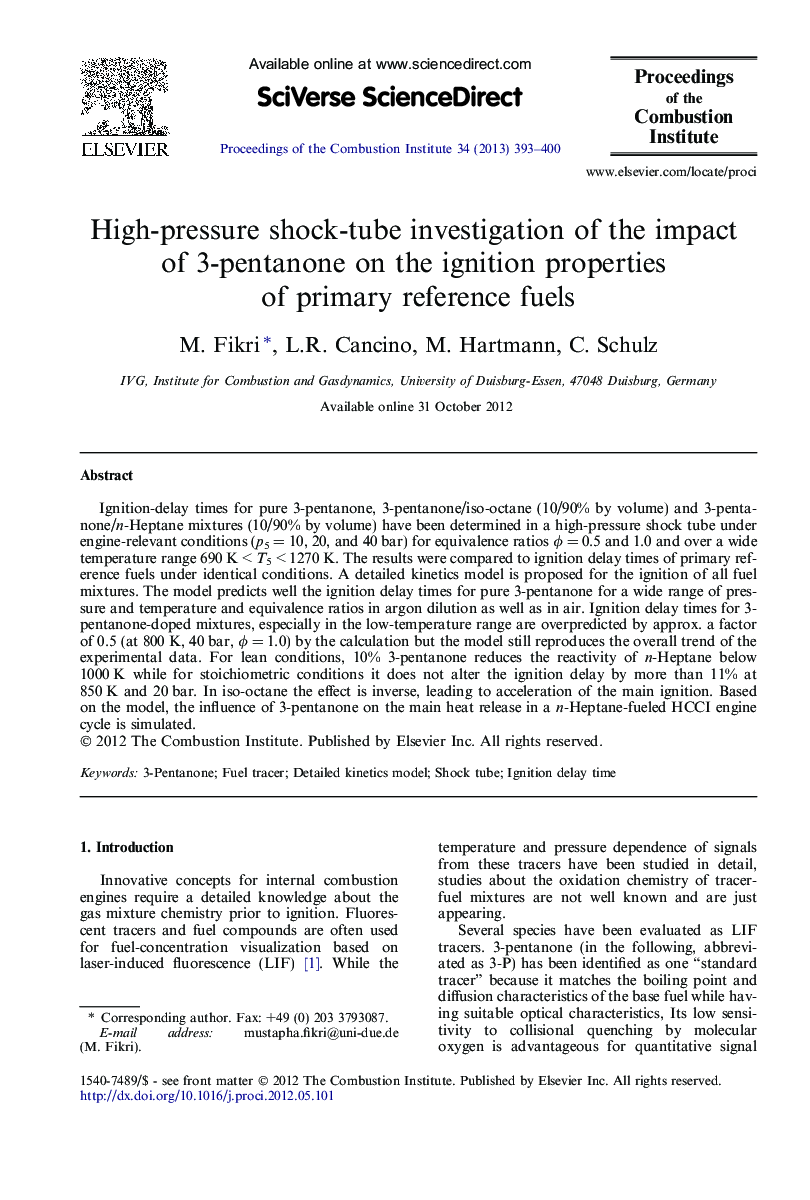| Article ID | Journal | Published Year | Pages | File Type |
|---|---|---|---|---|
| 241139 | Proceedings of the Combustion Institute | 2013 | 8 Pages |
Ignition-delay times for pure 3-pentanone, 3-pentanone/iso-octane (10/90% by volume) and 3-pentanone/n-Heptane mixtures (10/90% by volume) have been determined in a high-pressure shock tube under engine-relevant conditions (p5 = 10, 20, and 40 bar) for equivalence ratios ϕ = 0.5 and 1.0 and over a wide temperature range 690 K < T5 < 1270 K. The results were compared to ignition delay times of primary reference fuels under identical conditions. A detailed kinetics model is proposed for the ignition of all fuel mixtures. The model predicts well the ignition delay times for pure 3-pentanone for a wide range of pressure and temperature and equivalence ratios in argon dilution as well as in air. Ignition delay times for 3-pentanone-doped mixtures, especially in the low-temperature range are overpredicted by approx. a factor of 0.5 (at 800 K, 40 bar, ϕ = 1.0) by the calculation but the model still reproduces the overall trend of the experimental data. For lean conditions, 10% 3-pentanone reduces the reactivity of n-Heptane below 1000 K while for stoichiometric conditions it does not alter the ignition delay by more than 11% at 850 K and 20 bar. In iso-octane the effect is inverse, leading to acceleration of the main ignition. Based on the model, the influence of 3-pentanone on the main heat release in a n-Heptane-fueled HCCI engine cycle is simulated.
